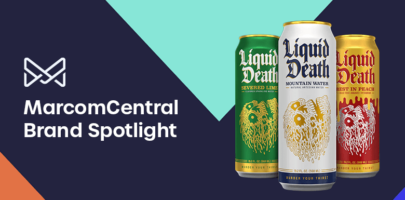- Key Healthcare Marketing Trends for 2025
- Tactics for Successful Healthcare Marketing
- Benefits of Implementing Healthcare Marketing Trends
- Get Healthcare Marketing Assistance at MarcomCentral
Get news, updates, and insights delivered straight to your inbox.
Marketing Trends in Healthcare to Incorporate in Your Marketing Strategy

Marketers in the healthcare industry need to keep up with evolving marketing strategies to ensure they’re staying effective in reaching potential patients. Key healthcare marketing trends today include personalization, local search optimization, and omnichannel marketing. Digital transformation, compliance, and automation also have a growing role in healthcare marketing, so marketers need to focus on these trends to get the best results. They also need to prioritize HIPAA-compliant strategies and multi-channel patient engagement when marketing healthcare services and professionals. Here, MarcomCentral explores the key healthcare marketing trends in 2025, tactics for implementing them, and how they will benefit healthcare marketers.
Key Healthcare Marketing Trends for 2025
Marketing trends and strategies evolve often in any industry, but in healthcare, it’s especially important that marketers and healthcare providers keep up with them. This is because potential patients are doing their research before deciding on a medical provider and they need to be swayed against competitors and pointed to the client. Some of the major healthcare marketing trends this year include:
Marketing Automation & Personalization
One of the biggest trends today is utilizing marketing automation tools and personalization. Marketing automation involves using technology to streamline repetitive marketing tasks, like sending emails and appointment reminders, running ad campaigns, managing patient feedback forms, and more. This helps reduce the manual workload of marketing teams and frees them up for strategic tasks that require human intervention. Using automation can also increase efficiency and lead to cost savings by reducing the number of team members needed to focus on these repetitive tasks.
Marketing teams can leverage customer relationship management (CRM) tools like automated workflows to improve patient outreach and retention. They should also utilize artificial intelligence (AI)-driven chatbots and predictive analytics for personalized engagement, which can individualize messages based on patient preferences, medical history, or schedules. When patients feel like their messages are being tailored to their specific preferences, their user experience is improved. This results in improved satisfaction and can lead to patients returning.
SEO & Local Search Optimization
Another trend in healthcare marketing today is search engine optimization (SEO) and local search optimization. SEO is regularly used in marketing different businesses, helping them to appear in the top search results on search engines. Healthcare organizations and practices also need to utilize SEO, especially local SEO. This helps enhance online findability using structured data, physician profiles, and local listings, in turn leading to higher rankings and increased organic traffic from nearby patients.
When utilizing local SEO, it’s important to prioritize Google Business Profile optimization, which helps a business appear in local search results and Google Maps. This helps potential patients in the area find the practice, as well as improves their brand awareness and overall online presence.
Part of local search optimization also involves review management, which consists of monitoring, responding to, and leveraging online reviews of a healthcare practice or facility. By replying to reviews, acknowledging concerns, and thanking customers, medical practices can build trust with patients, improve their brand reputation, and identify areas to improve upon.
Omnichannel Digital Marketing
Omnichannel digital marketing is another important trend to keep in mind in the current atmosphere. Different age groups and sectors of patients utilize different marketing channels, so healthcare marketers need to employ omnichannel digital marketing campaigns. For example, marketing via ads on Facebook may be a good way to reach older millennials and baby boomers, while Gen-Z patients are more likely to be using social media apps like Instagram or TikTok.
Healthcare marketers can expand their reach by marketing via various channels, such as email, social media platforms, and digital ads. They can craft patient-centered campaigns with educational content and thought leadership related to current health crises or concerns, such as the bird flu, mental health issues, and more. However, marketing teams need to be sure to ensure compliance with industry guidelines when using omnichannel marketing efforts.
Omnichannel marketing benefits healthcare organizations by providing seamless patient experiences that are consistent in messaging, whether the patients are viewing content online, in person, or through other channels. Healthcare organizations and their marketers can also benefit from tracking the interactions across their different channels. This provides valuable insights into patient behavior and preferences, so they can make data-driven marketing decisions going forward.
HIPAA-Compliant Digital Strategies
Utilizing HIPAA-compliant digital strategies is another key trend in healthcare marketing. Anyone in the healthcare industry must comply with the Health Insurance Portability and Accountability Act (HIPAA). HIPAA is a federal law that sets national standards for protecting sensitive patient information, referred to as Protected Health Information (PHI). Even healthcare marketers must follow HIPAA compliance when marketing their organizations or facilities, specifically when using PHI for marketing purposes.
They must comply with the HIPAA Privacy Rule, which requires healthcare organizations to obtain written authorization to use any patient data for marketing purposes, as well as the HIPAA Security Rule. This rule states that covered entities (healthcare providers, pharmacies, etc.) and business associates (marketers and agencies) must maintain reasonable and appropriate safeguards for protecting electronic PHI.
Some of the best practices for secure patient data handling in marketing include:
- Obtaining patient authorization to use PHI for marketing purposes, including patient reviews and other healthcare information
- Using consent forms that clearly state the purpose of using patient information and who will see it
- Removing or anonymizing any PHI that is used in marketing platforms
- Allowing patients to opt out of marketing-related communications
It’s also essential that healthcare marketers ensure compliance in email, retargeting, and social media campaigns. Marketing tools and platforms are only considered HIPAA compliant if there is a Business Associate Agreement (BAA). If using non-compliant platforms, they must be properly configured to ensure they don’t breach any regulations or HIPAA rules. When providing telehealth services, healthcare organizations must ensure their telehealth platform is secure and meets HIPAA standards for data security and privacy. Many healthcare facilities utilize platforms like Zoom for Healthcare, which provides a HIPAA-compliant solution using encrypted video conferencing.
Tactics for Successful Healthcare Marketing
Now that you’re familiar with the main trends in healthcare marketing today, it’s vital to learn how to implement them successfully. Follow these tactics to get the best results when marketing a healthcare facility or organization:
Content Marketing & Thought Leadership
Thought leadership is an important concept in content marketing for healthcare services and organizations. It refers to the process of establishing an organization or business as an expert in a specific field. They do this by regularly creating and sharing knowledgeable content that people can trust and look to as an influential source in the industry or community. Thought leaders in healthcare essentially establish credibility by using their deep knowledge and sharing it with others. They do this through blogs, case studies, and webinars, as well as using interactive and video content for patient education and trust-building. By becoming a thought leader in the healthcare industry, potential patients will trust the information these leaders provide, therefore making them more likely to go to them with their health problems and concerns.
Reputation Management & Patient Acquisition
Patient reviews can be helpful for marketing healthcare organizations, but they can also be harmful if there are negative reviews. Even a few negative reviews can make potential patients weary, so it’s important that organizations use reputation management techniques to generate positive reviews and address negative ones. They can encourage satisfied patients to leave reviews on their website and respond to any unsatisfied patients addressing their concerns. This helps build patient trust through transparency.
Any healthcare organization depends on patients to run. Patient acquisition is a strategy that helps attract new patients through various marketing channels, consistent branding, and targeting. Healthcare marketers and facilities can streamline lead generation using automated scheduling tools and digital PR. This involves promoting an organization and its image through earned media coverage that generates positive press and increases the interest of potential healthcare consumers.
HIPAA-Compliant Digital Strategies Cybersecurity & Data Protection
As mentioned above, healthcare organizations and marketers must comply with HIPAA rules and regulations. When implementing key marketing trends and initiatives, it’s crucial to ensure HIPAA compliance and safeguard patient information in ads, CRM platforms, and website interactions. Some ways to do so include:
- Creating login credentials, like usernames and passwords, for authorized users
- Using two-factor authentication (2FA) for enhanced security
- Assigning access controls to restrict who can access certain data and systems
- Using data encryption to prevent unauthorized access
By using cybersecurity and data protection tools, healthcare organizations can stay compliant with HIPAA and build customer trust.
Benefits of Implementing Healthcare Marketing Trends
Incorporating several key healthcare marketing trends may seem like a lot of work, but the benefits they provide are worth it. They include:
Increased Patient Acquisition
One of the major benefits of implementing healthcare marketing trends is increased patients. Healthcare organizations rely on patients to run and earn revenue. Organizations that only utilize word of mouth or print advertising are missing out on other sectors of potential patients. By using omnichannel marketing, local search optimization, and personalization, healthcare facilities reach more potential patients. By establishing themselves as a trusted source via thought leadership, these organizations can demonstrate their expertise and attract new patients. When healthcare facilities expand their patient bases, they can make money and keep employees and patients satisfied.
Increased Patient Retention
Another advantage of utilizing key healthcare marketing trends is increased patient retention. Attracting new patients is only beneficial if they return to your healthcare practice time and time again. If they only come once and don’t return, you won’t get the advantage of their loyalty and recommendations or referrals they may give to others. By utilizing marketing trends that improve the patient experience, such as personalization and HIPAA-compliant strategies, patients are more likely to be satisfied and return to a practice. Having loyal patients can also help organizations generate revenue from referrals, resulting in a boost in profitability.
Enhanced Reputation
An enhanced reputation is another advantage of using key healthcare marketing strategies. A strong reputation is of utmost importance for healthcare organizations, as patients often search for recommendations from family members, friends, and online groups. They also read reviews and testimonials that can influence their decisions. Using multi-channel marketing and consistent brand messaging helps create a strong online presence and leads to a stronger reputation. A strong reputation establishes a healthcare organization as a trusted place to go for medical care.
Increased Patient Education
Another benefit of implementing key marketing trends is increased patient education. By positioning their organization as a thought leader in the medical field, healthcare marketers can provide patients with reliable information that gives insight into common medical concerns, prevention tips, and more. By doing so, they can improve patient education and empower patients to make informed health decisions.
A Boost in Operational Efficiency
Increased operation efficiency also benefits healthcare organizations when they use key marketing trends, especially those like marketing automation. Healthcare providers and their surroundings are busy, and they may not have spare time to send appointment reminders, read feedback forms, and more. By automating these tasks, these healthcare professionals have more time to focus on their other important duties, like caring for patients. This helps increase operational efficiency, which also improves patient satisfaction and their likelihood to return.
Competitive Advantage
Nowadays, there is a vast amount of healthcare providers and professionals that patients can choose to see. Healthcare marketers and organizations need to utilize major marketing trends to maintain their competitive advantage and help patients choose them over competitors. By using trends like personalization and local search optimization, organizations can connect with potential patients who are nearby and tout their benefits. This is crucial for helping healthcare organizations differentiate themselves from competitors in a crowded marketplace.
Get Healthcare Marketing Assistance at MarcomCentral
Lean into the top healthcare marketing trends to help your healthcare facility acquire patients and keep them satisfied. By leveraging automation, personalization, and compliance-driven marketing strategies, healthcare marketers and their organizations are able to be successful in their marketing endeavors.
If your healthcare organization is looking for scalable marketing automation and brand management tools, turn to MarcomCentral. We offer a variety of solutions tailored to the unique needs of healthcare, including a centralized brand repository and built-in analytics for data-driven decision-making. Our platform helps maintain brand consistency and supports controlled content distribution across your organization. To learn more about how MarcomCentral can support your healthcare marketing efforts, request a demo today.


